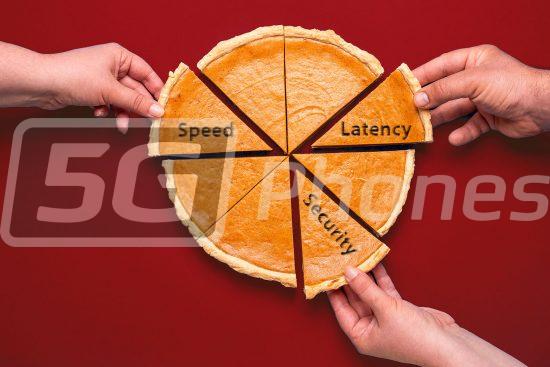UK first 5G network slice by Vodafone and Ericsson
17th March 2022 By: Adam
Vodafone and Ericsson completed a successful lab trial demonstrating 5G network slicing with on-demand quality of service control for the virtual reality use cases.
Network slicing is a new service for business customers and application developers, enabled by the deployment of 5G Standalone (SA) networks. The service allows mobile operators to create multiple virtual network slices which operate across the same physical network. Each slice is isolated from other network traffic to give a dedicated and guaranteed performance, with the features of the slice tailored to the use case requirements.
In a joint lab demonstration, the two technology teams worked together to create an on-demand 5G network slice that was configured, using a RAN slicing function, to provide the low latency and high bandwidth required for a virtual reality use case in a retail store. The slice guaranteed a download speed of 260Mbps and latency of 12.4 milliseconds. The process, from placing an order to creating of the network slice to carry live network traffic, took just 30 minutes. This demonstrates Vodafone and Ericsson’s ability to rapidly deliver automated and customised connectivity services as customers’ needs change.
A network slice can be customised to several different variables, including geographical location of the slice (single office location to nationwide), download and upload speeds (minimum thresholds), latency (maximum threshold), capacity (device connection density in specific areas), and security (enhanced cybersecurity features). New capabilities and services for customers may include secure communications for remote workers, high-performing cloud-based and mobile gaming, enhanced safety in autonomous vehicles, and remote assistance for specialist procedures in hospitals and ambulances.
The lab trial is the first of its kind for the mobile industry in the UK. In the future, Vodafone will create a catalogue of different network slices that can be selected by customers depending on the required experience. The selection and provision of network slices will be automated through a customer portal. The Vodafone team will work with customers to continually evolve the features that can be customised within a slice. According to Ericsson’s network slicing reports, is it estimated that 25-30% of the potential 5G use cases will need slicing as an enabler. Potential use cases include:
- Mobile gaming: Today’s player-versus-player real-time gaming experience requires low-latency performance to guarantee a high-quality experience. A maximum threshold for latency and jitter can be applied to specialised network slices to ensure the gaming applications react in near-real-time.
- Upgraded performance for short periods of time: Customers could “upgrade” performance for a short period of time. For example, increased download speeds to download video content ahead of plane trips.
- In-venue experience: The connectivity experience for customers at entertainment venues can be a frustrating experience because of the high concentration of people in a small area. However, as demand at these venues is not 24/7, it could make more commercial sense to deploy a high-bandwidth and high-capacity network slice to ensure customers at mass attendance events have suitable connectivity coverage.
- Automotive: For self-driving or remotely operated vehicles, enhanced and ultra-reliable connectivity is critical for both performance and safety. Specialised network slices could enable tele-operated/self-driving vehicles and real-time situational awareness. Network slicing also guarantees a certain level of Quality of Service to meet specific security needs that might be a regulatory requirement.
- Healthcare: Use cases include remote assessment of potentially life-threatening conditions through video where a low-latency slice could be critical for video performance, collecting data for early detection of diseases through precision medicine, as well as using robotics for rehabilitation with real-time control.
- Smart city (public safety): Use cases include real-time smart surveillance, massive mission-critical IoT (such as connectivity for electricity grid substations), and real-time location information for emergency services. As each of these use cases could impact the safety of the general public, it would be advantageous to have a specialised network slice, rather than using the public internet (a homogonous connectivity experience).
- Smart city (massive IoT): Opportunity to deploy new, low-energy, and cost-effective sensors at scale (smart electricity sensors for example) with capacity able to be adjusted with demand.
- Broadcast and production: Use cases include remote broadcast and production, where the quality of live-stream content could be impacted by network upload speed. At mass entertainment events, there is also a risk of network congestion, whereas a dedicated network slice for broadcasters would be one of the few options available to guarantee data is transferred back to production studios in a timely manner, especially in temporary venues (such as music festivals).